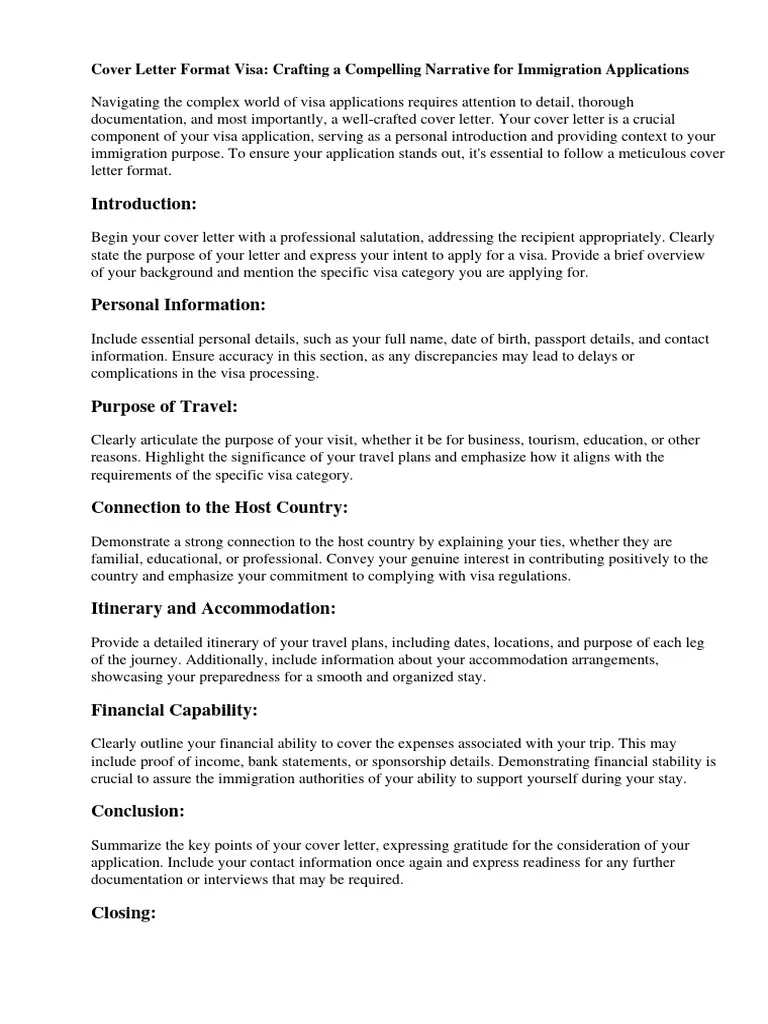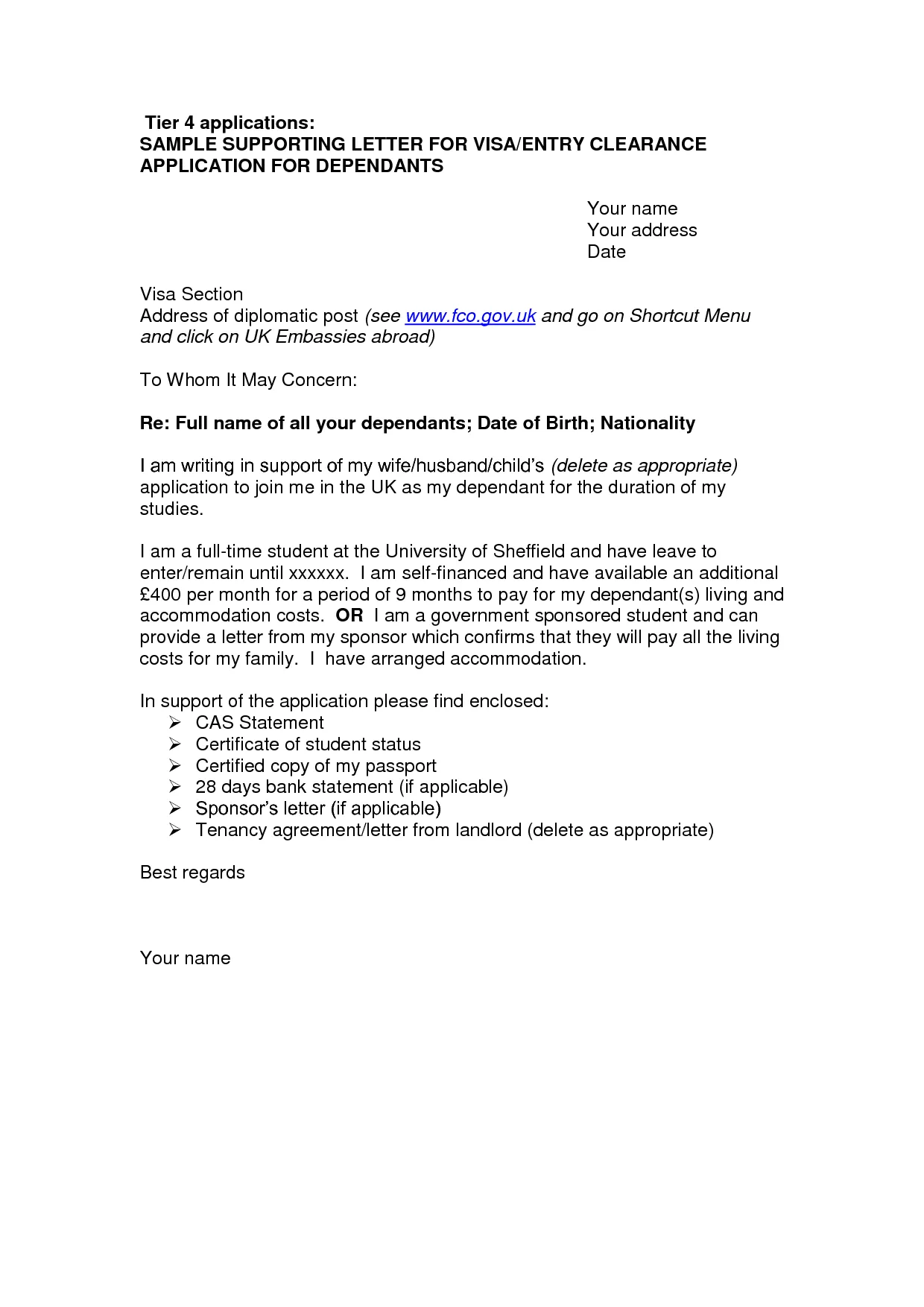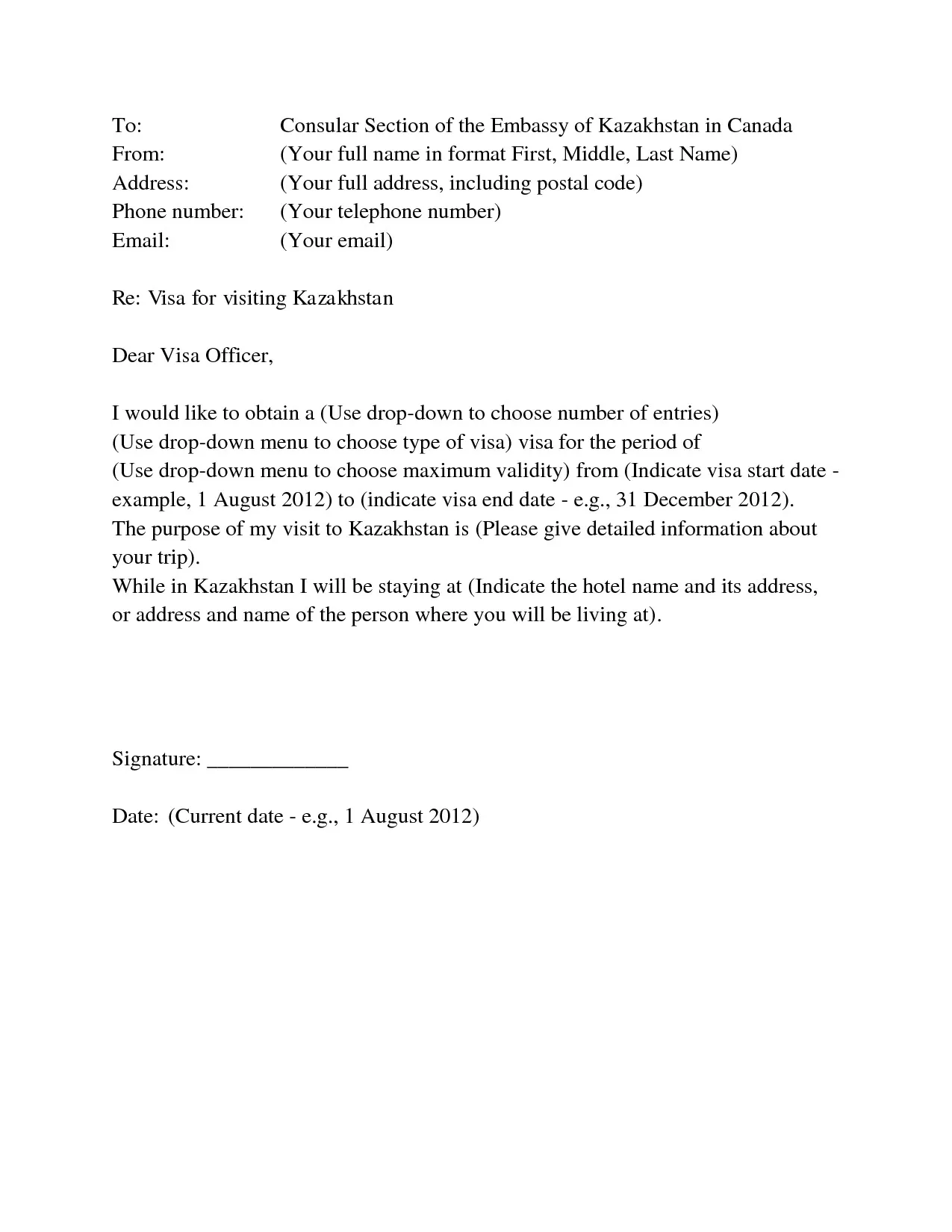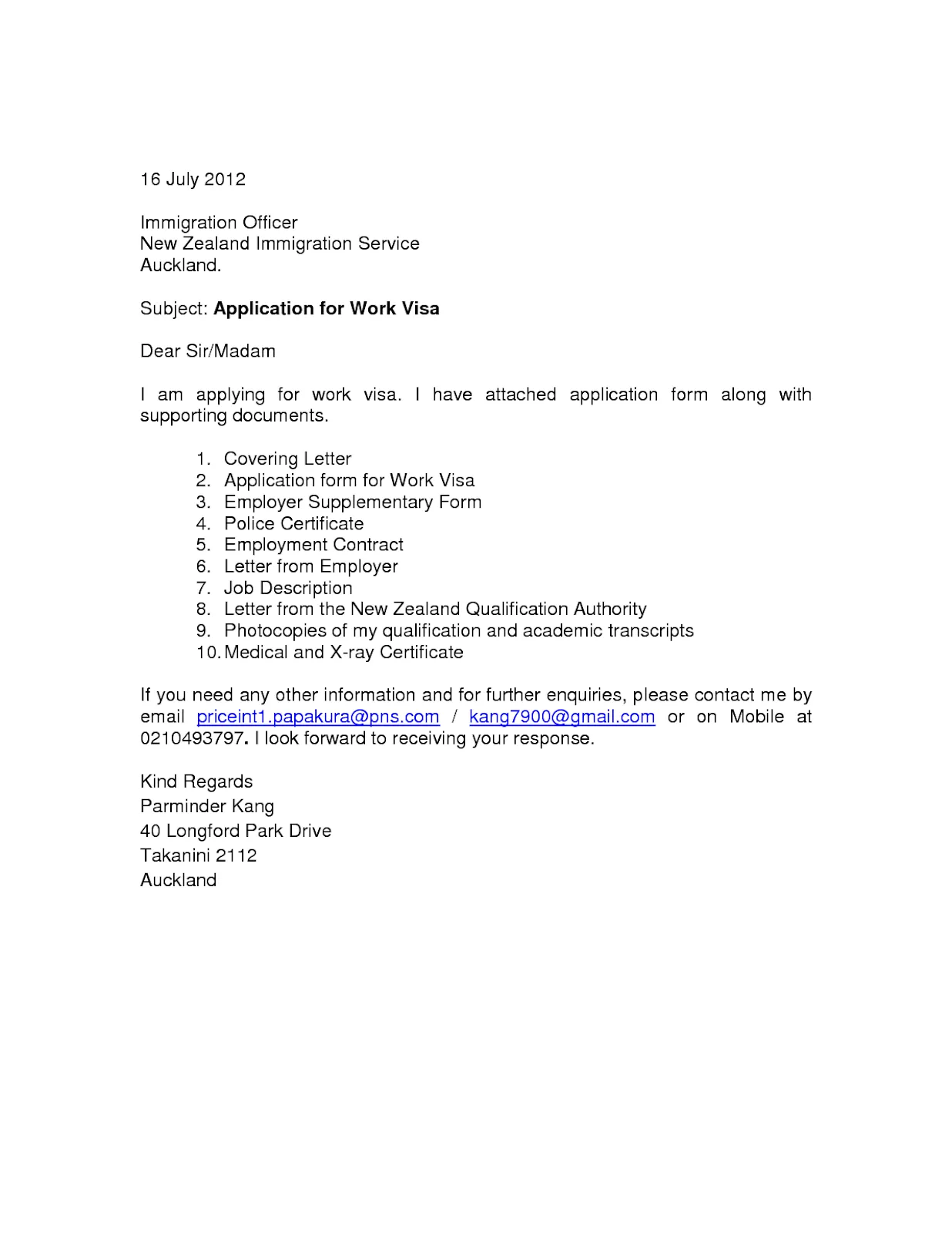Understanding the Visa Application Cover Letter
A visa application cover letter is an essential document that accompanies your visa application form and supporting documents. It serves as a formal introduction of yourself to the visa officer, providing context and explaining the purpose of your visit. Think of it as your personal statement, where you articulate your intentions and demonstrate your eligibility for the visa. A well-written cover letter significantly increases your chances of visa approval by clarifying any ambiguities and presenting your case in a clear, concise, and compelling manner. It allows you to address the visa officer directly, offering a narrative that complements the official application form and supporting documents. Therefore, a well-crafted cover letter sample is important for your visa application, as it can be the difference between approval and denial.
Importance of a Cover Letter
The importance of a cover letter cannot be overstated. It provides an opportunity to personalize your application and highlight the key aspects of your travel plans and background. While the visa application form contains factual information, the cover letter allows you to add a personal touch, explaining your motivations and intentions more fully. It’s your chance to persuade the visa officer that you are a genuine traveler who intends to return to their home country after their visit. The cover letter demonstrates your attention to detail, organizational skills, and respect for the visa process. A well-structured and thoughtful cover letter can help you avoid any misunderstandings or assumptions that could lead to denial.
Key Components of a Strong Cover Letter

A strong cover letter is comprehensive, clear, and well-organized. It should follow a logical structure, addressing all the essential aspects of your application. Begin with a formal greeting, clearly stating your purpose and the type of visa you are applying for. Provide your personal information, including your full name, date of birth, and passport number. Detail the purpose of your trip, including specific reasons and activities. Describe your travel itinerary, financial stability, and ties to your home country. End the letter with a polite closing and your signature. Each section should provide relevant information and support your claim for the visa. Always remain honest and make sure that your information is in line with the other supporting documents.
Personal Information
Start your cover letter by introducing yourself. Include your full name, as it appears on your passport, your date of birth, place of birth, and passport number. This immediately helps the visa officer to identify your application. You can also mention your current nationality. Always ensure this information is consistent with the details on your passport and visa application form. This is the foundation of your application, so accuracy is paramount. Providing all this information at the start sets a clear and professional tone, making it easy for the visa officer to connect the cover letter with the rest of your application materials.
Purpose of Your Trip
Clearly and concisely state the purpose of your trip. Be specific about why you are traveling and what you plan to do. If you’re visiting for tourism, mention the specific sights you plan to see and the duration of your stay. If you are going for business, explain the nature of your business activities, the companies involved, and the expected outcomes. For educational purposes, provide details about the course, the institution, and the duration of your studies. Honesty and transparency are key; avoid vague statements. Use concrete examples and facts to support your claims. If you have any events or appointments scheduled, mention them to give your application more weight. A well-defined purpose will make your application more credible.
Travel Itinerary Details

Include a detailed travel itinerary in your cover letter. Specify your arrival and departure dates, and list all the places you plan to visit. Include flight details, hotel reservations, and any other arrangements. Having a detailed itinerary shows that you have planned your trip and have clear intentions for your stay. If you are visiting family or friends, include their names, addresses, and contact information. If you are attending an event, provide information about the event, such as the date, location, and purpose. The more detailed your itinerary, the more confident the visa officer will be in your travel plans. Make sure all the information aligns with the supporting documents.
Financial Stability
Provide evidence of your financial stability. This is crucial to prove that you can support yourself financially during your stay and that you are unlikely to seek employment or assistance in the destination country. Include bank statements, showing sufficient funds to cover your travel expenses, accommodation, and other costs. You can also provide a letter from your employer confirming your salary and employment details. If someone is sponsoring your trip, provide a sponsorship letter along with their financial documents. The more robust the evidence of your financial capability, the better. Remember, you are proving your ability to support yourself and ensure you will not be a burden to the destination country.
Ties to Your Home Country
Demonstrate that you have strong ties to your home country to reassure the visa officer that you will return after your visit. Provide evidence of property ownership, family responsibilities, employment, or investments in your home country. If you own a house or any property, include the relevant documents. If you have family members, mention them and their relationship to you. If you have a job, attach an employment letter stating your position, salary, and the duration of your employment. These ties will show that you have compelling reasons to return home. The stronger your ties, the more likely you are to receive visa approval.
Supporting Documents

Clearly list all the supporting documents you have included with your application. This helps the visa officer to easily locate and review your documents. This list should include your passport, visa application form, photographs, travel itinerary, bank statements, employment letter, and any other relevant documents. Be as specific as possible, and make sure that the order of the documents in your list matches the order in which you have submitted them. This helps streamline the assessment process and ensures that nothing is missed. Referencing your supporting documents builds trust and ensures that you are being transparent with the visa officer. Also, make sure that all your documents are in line with the sample visa application cover letter.
Formatting Your Cover Letter
Format your cover letter professionally. Use a standard business letter format, with a formal greeting, body paragraphs, and a polite closing. Use a clear and readable font, such as Times New Roman or Arial, with a font size between 11 and 12. Maintain consistent margins and spacing throughout the letter. Keep your sentences concise and to the point. Use paragraphs to separate different ideas and make your letter easy to read. Ensure your letter is free of grammatical errors and typos. A well-formatted letter reflects your attention to detail and seriousness about your application. Proofread the letter multiple times before submitting it.
Professional Tone and Language
Use a professional tone and language throughout your cover letter. Address the visa officer respectfully, using formal greetings and closings. Avoid slang, colloquialisms, and informal language. Use clear, concise language to convey your message effectively. Be honest and truthful in all your statements. Avoid exaggerations or making false claims, as this can lead to visa rejection. Keep the language positive and optimistic. Present your information in a confident and straightforward manner. Showing respect and professionalism will enhance the overall impression of your application.
Proofreading and Editing

Before submitting your cover letter, carefully proofread and edit it. Check for grammatical errors, spelling mistakes, and typos. Ensure that the information is accurate and consistent with your other documents. It’s helpful to have someone else review your letter to provide a fresh perspective and catch any errors you might have missed. Read your letter aloud to identify awkward phrasing or unclear sentences. Make sure the letter flows logically and is easy to understand. Correct any errors and revise any confusing sections. Proofreading is an essential step to ensure your cover letter is polished and presents you in the best possible light.
Common Mistakes to Avoid
Avoid common mistakes that can lead to visa rejection. Ensure that your cover letter sample is accurate and fully completed. Avoid providing false or misleading information. Make sure your application is error-free. Ensure that all your information is complete and supported by documents. Don’t submit a generic or boilerplate cover letter; personalize it to your specific situation. A poorly written or incomplete cover letter can create doubts in the mind of the visa officer and lead to your application being denied. Take your time and make sure your letter is perfect.
Overlooking Small Details
Small details can have a big impact. Pay close attention to every aspect of your cover letter, from the formatting to the choice of words. Review your contact information to make sure it is correct. Ensure your dates and figures are accurate. Double-check the names of places, people, and organizations. Proofread the letter multiple times to catch any errors. Small mistakes can undermine the credibility of your application. Taking care of the details will demonstrate your attention to detail and your commitment to presenting a complete and accurate application.
Providing Insufficient Information

Providing insufficient information is a common mistake. Don’t leave out important details, such as the purpose of your trip, your travel itinerary, and your financial situation. Give as much relevant information as possible to support your application. The visa officer needs to understand the reasons for your travel. Be as detailed as possible without being overly verbose. Insufficient information makes it difficult for the visa officer to assess your application and can result in rejection. Make sure that all the important information is clearly presented and well-supported by documents.
Sample Visa Cover Letter
A sample visa application cover letter can be a helpful guide. Many websites offer sample cover letters for various visa types. Reviewing these examples can help you understand the format, language, and content requirements for your own letter. Remember to tailor the sample to your personal circumstances; do not simply copy and paste. Use the sample as a template to create your own personalized cover letter, providing accurate information. Adapt the sample to reflect your specific situation and include all relevant details. You may find various cover letter templates on the internet, but remember to review them, so that you may create a great visa cover letter.
Cover Letter Checklist
Use a checklist to ensure you have included all the necessary elements in your cover letter. The checklist should include personal information, the purpose of your trip, travel itinerary details, financial stability proof, ties to your home country, and a list of supporting documents. Double-check to see if you have formatted your letter professionally and used a clear, concise, and professional tone. Proofread your letter for errors, and ensure that all the information is accurate and consistent. By using a checklist, you can make sure that your cover letter is complete and well-prepared. This is a simple and effective way to prevent errors and increase your chances of visa approval.
